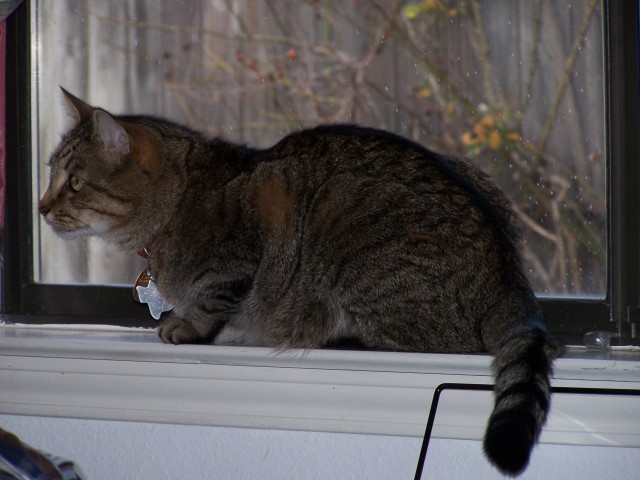QuestionWe just adopted a 2 year old fixed female. We have a 3 year old fixed male who we have had for almost 2 years. We did have another male cat who passed away recently. The female is very timid and nervous. She has been hiding under beds since we brought her home yesterday. She has had some good interactions with us, but my male cat tends to chase her under the beds and they both growl a lot at each other. I am concerned that the female will take to hiding and not want to come out and be social. Today we have her in her own room with all her supplies. What else should we do and when should we let them have more contact? What behaviors are okay and when should we seperate them? At what point should we be concerned if the female is still "hiding"?
AnswerPauline,
O.K. You are now where you need to be in introducing your new cat. Below, is a tried and true method we have been using for years to introduce a new cat into a household with established pets.
Start out your new cat in one room with a litter pan and water dish. Ideally, the one room should be a bedroom with yourself or another human resident. This accomplishes a couple of things. Your new cat will not be overwhelmed by its new surroundings and get "lost", and thusly will have no problem finding the litter pan (often kittens or rescue cats have been confined and are somewhat daunted by wide open spaces!). You will feed the new cat in this room and keep the established cat out. It allows the new cat to bond with you or another human being and also build up some self assurance in its new surroundings since it will not have to compete for food or attention right away. If the new cat is not in a bedroom, then you or another human in the household should spend much time with your new cat. Finally, it allows the new cat and the established cat to sniff each other under the door and get familiar with each others' scents.
After 3-5 days of being in its one room, it is time to let them meet each other. In this case I would give it a week since the first introduction was a bit strained. Be prepared for some posturing, some spitting and hissing, and the like. IGNORE IT! After a while, they should begin chasing each other about and still have the occasional hiss or spit as they get acustomed to each other. Cats tend to make a whole lot of noise and even loosen up some fur. Rarely will two cats hurt each other.
Once they are introduced, there are a couple of things you must remember. Do not separate them again, they will get along! Do not interfere in their "discussions" as they need to sort it out amongst themselves!
It does not hurt to give the established cat treats and extra attention after the new cat is introduced (yes, cats do get jealous!).
A couple of things you may have to do are to feed them on separate dishes. Provide more than one litter pan in different areas of the household (as cats can be very territorial about litter pans).
All, in all, this method seems to have had great success in the past and makes for a fairly smooth introduction. Please remember that they may make up immediately, or it may take a few weeks.
You need to have patience and perseverance while they work out their inter-relationships. Usually, cats do get along fine, but, like people, every once in a while, two cats take an intense dislike to each other. Fortunately, this is very, very rare.
Please let me know how it turns out.
Good luck and best regards... Norm.

 What breed/mix is my cat?
QuestionSugar and Oliver
QUESTION: Hi,
Im wond
What breed/mix is my cat?
QuestionSugar and Oliver
QUESTION: Hi,
Im wond
 urgent cat problem
Question
kitty aka chanel
my cat is about 7 mont
urgent cat problem
Question
kitty aka chanel
my cat is about 7 mont
 Worried that my cat has a UTI??
Question
Oscar
Hello,
My name is Danielle and I have t
Worried that my cat has a UTI??
Question
Oscar
Hello,
My name is Danielle and I have t
 My 12 year old indoor/outdoor male escaped 2 weeks after a recent move
QuestionEefa and our lost blac
QUESTION: We trie
My 12 year old indoor/outdoor male escaped 2 weeks after a recent move
QuestionEefa and our lost blac
QUESTION: We trie
 Cat gets angry at tail
Question
Rascal Rasputin
My indoor adult cat seems to g
Cat gets angry at tail
Question
Rascal Rasputin
My indoor adult cat seems to g